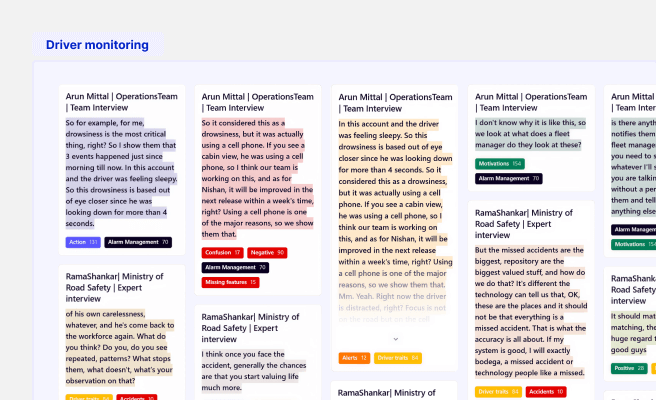Concept Testing
<p>Concept testing is a critical phase in the product development process that involves evaluating the potential success of a new idea before it is brought to market. This assessment helps companies determine whether their target audience will embrace a product concept by gathering feedback through surveys, focus groups, and other research methods.</p>
<p>Historically, concept testing has been used across various industries to minimize risks and make informed decisions about product launches. In the climate tech sector, for example, concept testing allows companies to gauge interest in innovative solutions aimed at tackling environmental challenges.</p>
<h2>Steps in Concept Testing</h2>
<p>To conduct effective concept testing, companies generally follow these steps:</p>
<ul>
<li><strong>Define Objectives:</strong> Clearly outline what you want to learn from the concept testing process.</li>
<li><strong>Identify Target Audience:</strong> Determine who your potential customers are and what specific demographics you need to target.</li>
<li><strong>Develop Concept Stimuli:</strong> Create representations of the product concept, such as sketches, prototypes, or descriptions.</li>
<li><strong>Choose Research Method:</strong> Select appropriate methods for gathering feedback, such as surveys, focus groups, or interviews.</li>
<li><strong>Collect Data:</strong> Administer the chosen research method to your target audience and gather their responses.</li>
<li><strong>Analyze Results:</strong> Review the feedback to identify trends, strengths, and weaknesses of the concept.</li>
<li><strong>Refine the Concept:</strong> Make necessary adjustments based on the insights gained from the feedback.</li>
</ul>
<h3>Types of Concept Testing</h3>
<p>Concept testing can be conducted using various methods, each suited for different scenarios:</p>
<ul>
<li><strong>Monadic Testing:</strong> Participants evaluate a single concept in isolation, which helps in understanding its standalone potential.</li>
<li><strong>Comparative Testing:</strong> Multiple concepts are tested against each other to see which one performs better.</li>
<li><strong>Sequential Monadic Testing:</strong> Participants sequentially evaluate multiple concepts, allowing for direct comparison.</li>
<li><strong>Proto-monadic Testing:</strong> Combines monadic and comparative approaches to provide comprehensive insights.</li>
</ul>
<h3>Benefits of Concept Testing</h3>
<p>Concept testing offers several advantages for companies looking to introduce new products:</p>
<ul>
<li><strong>Risk Reduction:</strong> Identifies potential issues and reduces the risk of market failure.</li>
<li><strong>Cost Efficiency:</strong> Saves resources by identifying non-viable concepts early in the development process.</li>
<li><strong>Market Alignment:</strong> Ensures the product concept aligns with market needs and preferences.</li>
<li><strong>Data-Driven Decisions:</strong> Provides actionable insights that inform strategic decisions.</li>
</ul>
<h3>Challenges in Concept Testing</h3>
<p>While concept testing is invaluable, it does come with challenges:</p>
<ul>
<li><strong>Bias in Feedback:</strong> Participants may provide biased feedback due to the artificial testing environment.</li>
<li><strong>Limited Scope:</strong> Testing may not capture all variables influencing market success.</li>
<li><strong>Resource Intensive:</strong> Conducting comprehensive tests can be time-consuming and costly.</li>
</ul>
<h3>Real-World Examples</h3>
<p>Concept testing has proven effective in various industries, including climate tech. For instance, <a href="https://www.tesla.com" style="color: #2896FF; text-decoration: underline;">Tesla</a> used concept testing for its electric vehicles to understand consumer preferences and expectations, which helped them refine their offerings and successfully penetrate the market. Similarly, <a href="https://www.nest.com" style="color: #2896FF; text-decoration: underline;">Nest</a> used concept testing for its smart thermostat to ensure it met the needs of environmentally conscious consumers.</p>
<h2>Implementing Concept Testing</h2>
<p>To implement concept testing effectively, consider these actionable steps:</p>
<ul>
<li><strong>Leverage Technology:</strong> Use online survey tools like <a href="https://www.surveymonkey.com" style="color: #2896FF; text-decoration: underline;">SurveyMonkey</a> or <a href="https://www.typeform.com" style="color: #2896FF; text-decoration: underline;">Typeform</a> to gather feedback efficiently.</li>
<li><strong>Engage with Experts:</strong> Consult with market research firms to design and execute robust concept tests.</li>
<li><strong>Iterate Based on Feedback:</strong> Continuously refine your product concept based on the insights gained from testing.</li>
</ul>
<h2>Conclusion</h2>
<p>Concept testing is a vital tool for ensuring the success of new product ideas. By systematically gathering and analyzing feedback, companies can make informed decisions, minimize risks, and align their products with market demands. For those in the climate tech industry, incorporating concept testing can lead to more innovative and impactful solutions that address pressing environmental challenges.</p> <p>Increase user engagement that converts your demos into sales. Optimise your UX strategies with our audits.
<p>Fill out the <a href="https://tally.so/r/n97pxQ" style="color:#2896FF; text-decoration:underline;">UX Audit form</a> to get started. Ready to discuss your needs? <a href="https://cal.com/akhilak/what-if-design?duration=25" style="color:#2896FF; text-decoration:underline;">Book a consultation call</a> with us today.</p></p>

Let's scale your impact with great design.
Free consultation, no sales pitch
Thank you! Your submission has been received!
Oops! Something went wrong while submitting the form.
Let’s talk
Nothing great is built alone.
Let’s connect about your vision, our work and how we can collaborate.
Get in touch

